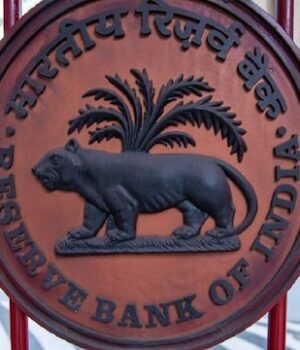SOURCE : NEW18 NEWS
Last Updated:May 23, 2025, 19:20 IST
The Reserve Bank of India announced a record dividend payout of Rs 2.69 lakh crore to the central government for FY 2024-25, surpassing last year’s Rs 2.1 lakh crore.
The RBI’s record surplus transfer for FY25 provides a potential fiscal boost to the government ahead of key expenditure plans.
RBI Dividend 2025: The Reserve Bank of India (RBI) on Friday announced a dividend payout of record Rs 2.69 lakh crore for the central government for the financial year 2024-25. This much-anticipated announcement was made after the 616th meeting of the RBI’s Central Board of Directors under the chairmanship of RBI Governor Sanjay Malhotra.
Last year, the RBI had transferred a record surplus of Rs 2.1 lakh crore for FY24, more than double the Rs 87,416 crore transferred in FY23.
Recommended Stories
“The Board thereafter approved the transfer of Rs 2,68,590.07 crore as surplus to the Central Government for the accounting year 2024-25,” the RBI said in a release.
However, the central bank has also decided to increase the contingent risk buffer (CRB) to 7.50 per cent, from 6.5 per cent earlier.
“Based on the revised ECF, and taking into consideration the macroeconomic assessment, the Central Board decided to further increase the CRB to 7.50 per cent,” it added.
The RBI said the revised framework stipulates that the risk provisioning under the Contingent Risk Buffer (CRB) be maintained within a range of 7.50 to 4.50 per cent of the RBI’s balance sheet.
Aditi Nayar, chief economist at ICRA Ltd, said, “The RBI has pegged the surplus transfer to the GoI in the ongoing fiscal at Rs 2.7 lakh crore, higher than the year ago level of Rs 2.1 lakh crore. This is nearly Rs 0.4-0.5 lakh crore (equivalent to 11-14 bps of GDP) higher than the amount that was likely assumed in the FY2026 Union Budget, implying an equivalent upside to non-tax revenues, which would provide some buffer to make up for a miss in taxes or disinvestment receipts, or higher-than-budgeted expenditure in the fiscal.”
She added that the upward revision in the FY2025 nominal GDP number suggests that despite a relatively lower growth of about 9 per cent in FY2026 (as per ICRA’s expectations) vis-à-vis the budgeted levels of 10.1 per cent, the fiscal deficit-to-GDP ratio can be contained at 4.4 per cent in FY2026, while also accommodating a marginal fiscal slippage (to the tune of about Rs 30,000 crore). This provides some comfort on the fiscal front.
On its likely impact on the markets on Monday (May 26), Murthy Nagarajan, head (fixed income) at Tata Asset Management, said, “The RBI’s dividend of Rs 2.69 lakh crore is lower than market expectation of Rs 3 lakh crore. This is due to the RBI revising its contingent liquidity buffer to 4.5 to 7.5 percent. The RBI’s board has increased its contingent reserve buffer to 7.5 percent, due to which this amount is lower than Rs 3 lakh crores which was the market expectation.”
“This is a disappointment for the market, and we can expect some profit booking after the steep rally which we saw in the last 10 days,” Nagarajan added.
Also Read: RBI Dividend 2025: How India’s Central Bank Earns Money, Why It Shares Profits With Government?
The RBI, like other central banks, earns a surplus every year through various operations and transfers a portion of this surplus to the central government as dividend or surplus transfer. This transfer is governed by the Economic Capital Framework (ECF), which was reviewed and revised in 2019 based on recommendations from a committee led by former RBI Governor Bimal Jalan.
As per the ECF, the RBI is required to maintain a certain level of risk provisioning — specifically under the contingent risk buffer (CRB) — within a range of 6.5 per cent to 5.5 per cent of its balance sheet. The remaining surplus after provisioning becomes eligible for transfer to the government.
However, the central bank has decided to increase the contingent risk buffer (CRB) to 7.50 per cent, from 6.5 per cent earlier.
- First Published:
May 23, 2025, 17:33 IST




